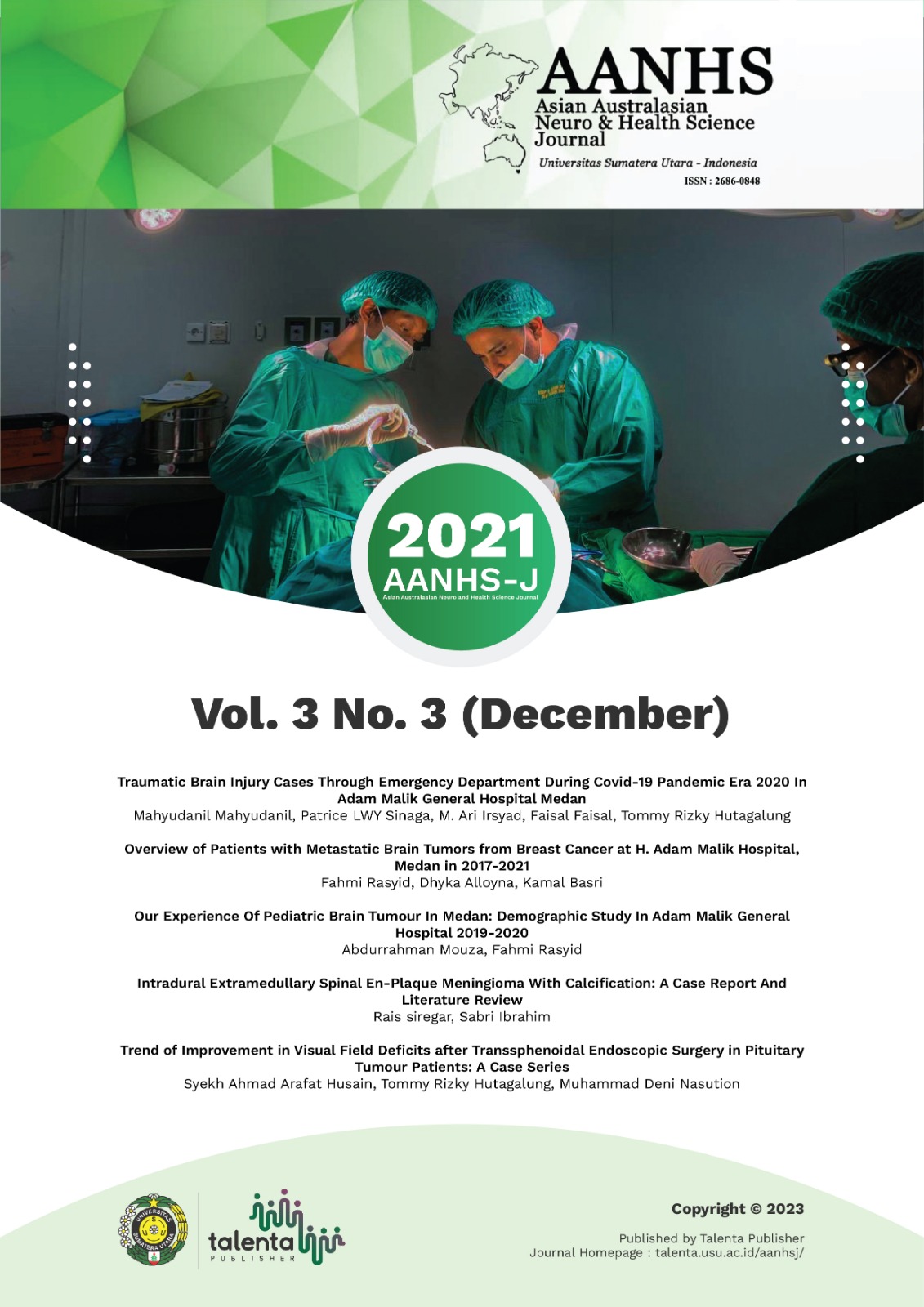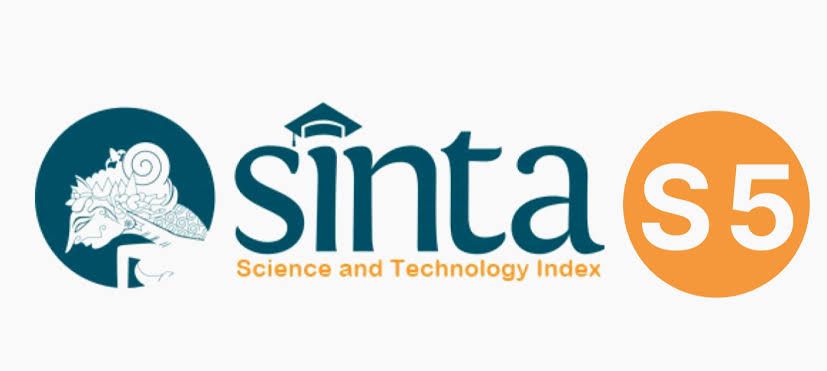Our Experience Of Pediatric Brain Tumour In Medan: Demographic Study In Adam Malik General Hospital 2019-2020
DOI:
https://doi.org/10.32734/aanhsj.v3i3.7606Keywords:
brain tumor, pediatric brain tumorAbstract
Abstract
Introduction: Primary brain and central nervous system tumors are the most prevalent and frequent neoplasm in children and adolescents aged 0 to 19 years. Brain and CNS tumors are the second leading cause of cancer-related deaths in children and adolescents aged 0 to 19 years old. Previous studies in several countries have reported the incidence rate of primary brain and CNS tumors in children and adolescent, ranged from 1.08 to 5.57 per 100,000 population. The incidence of brain tumor in pediatric patients has increased in the past decades, due to innovations in the imaging studies and the increase of benign form diagnoses. The highest occurrence of pediatric brain tumor is in the United States. Based on the study by Rictherova et al. in 2018, according to the age groups, the highest incidence is in adolescents aging 15-19 years with 6.38 per 100,000 children, followed by children aging under 1 year with 6.2 per 100,000 children.
Method: A total of 58 patients were reported in this study. Data was collected from medical bank data of Neurosurgical Department of Faculty of Medicine of North Sumatera in Indonesia. The variables that we collected were as follows: gender, tumor diagnosis, Glasgow-Coma Scale (GCS) score on admission, and age group. We classified age group into <1 year, 2-4 years, 5-9 years, 10-14 years, and 15-19 years old. The data was computed using the SPSS 25th edition.
Result: Out of 58 diagnosis, boys were the predominance frequency with a total of 69% and girls were 31%. most patients had medulloblastoma (27.6%) followed by glioma (24.1%), craniopharyngioma (8.6%), and meningioma (8.6%). Other types of tumor, namely cerebral abscess, cerebromalacia, choroid plexus papilloma, craniopharyngioma, ependymoma, neurofibromatosis 1, soft tissue tumor, were accounted for 1.7%, respectively
Discussion: Primary brain and central nervous system tumors are the most prevalent and frequent neoplasm in children and adolescents aged 0 to 19 years. Brain and CNS tumors are the second leading cause of cancer-related deaths in children and adolescents aged 0 to 19 years old. In our study, from a total of 58 patients, most of the patients (69%) were boys with a frequency of 40. Girls were only accounted for 18 (31%). A study by Stiller et al. in 2019 regarding incidence of childhood CNS tumors in Britain also reported similar result, with 2275 boys and 1891 girls out of 4166 tumor patients. The most common diagnosis was medulloblastoma (27.6%), in line with the study by Stiller et al. and Suresh et al. The most common age group with brain tumor was 10-14 years old (34.5%).
Conclusion: Based on our study, from the total of 58 patients, most of the patients were boys (69%). The most common tumor diagnosis in our study was medulloblastoma (27.6%) followed by glioma (24.1%). The results in our study had been in line with other literatures. However, the age group distribution was not in line with other literatures as our study reported the age group of 10-14 years old having the highest percentage of brain tumors. Overall, this study had reported the demographic result of pediatric brain tumor in Adam Malik General Hospital from 2019-2020.
Downloads
Downloads
Published
How to Cite
Issue
Section
License
Copyright (c) 2021 Asian Australasian Neuro and Health Science Journal (AANHS-J)

This work is licensed under a Creative Commons Attribution-NonCommercial-NoDerivatives 4.0 International License.
The Authors submitting a manuscript do understand that if the manuscript was accepted for publication, the copyright of the article shall be assigned to AANHS Journal.
The copyright encompasses exclusive rights to reproduce and deliver the article in all forms and media. The reproduction of any part of this journal, its storage in databases and its transmission by any form or media will be allowed only with a written permission from Asian Australasian Neuro and Health Science Journal (AANHSJ).
The Copyright Transfer Form can be downloaded here.
The Copyright form should be signed originally and sent to the Editorial Office in the form of original mail or scanned document.














